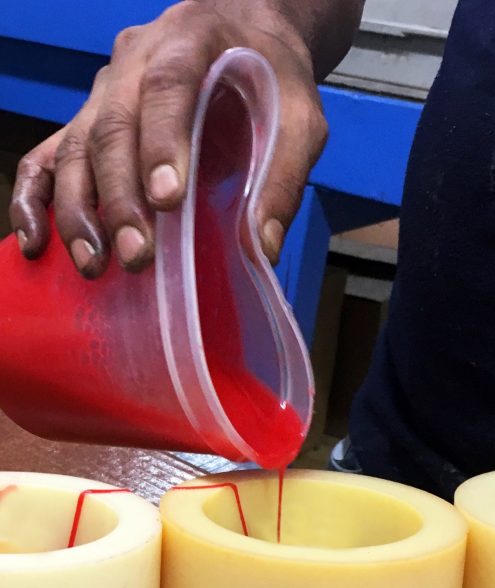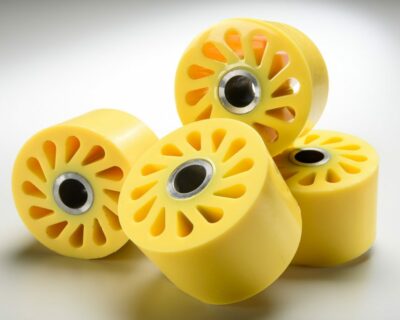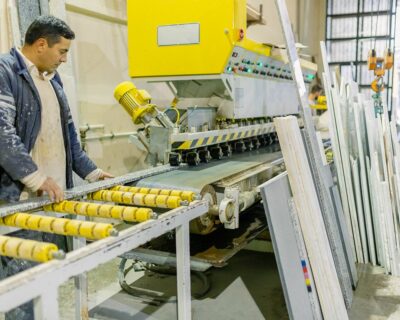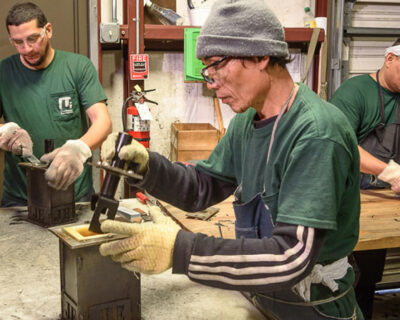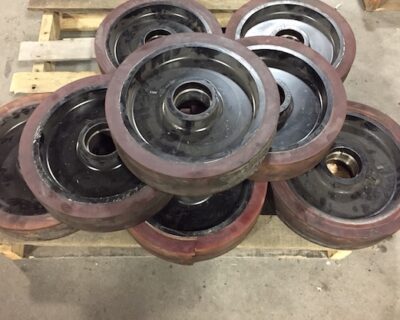A manufacturing company needed to create 80,000 parts of various sizes. The parts had to be lightweight but durable enough to survive adverse conditions for years. And, tooling and production costs had to be kept in check. UI solves the impossible.
The Challenge
A New England manufacturing company first visited Urethane Innovators in 2011 with a design concept for creating drain seals.
Due to the inherent challenges of the part, the UI engineering team was at first a little hesitant.
Urethane, as a material, is incredibly flexible and versatile, but the UI team wasn’t sure if they could find just the right urethane formulation to meet all of the client’s objectives.
UI engineers and the manufacturing client talked through the various challenges. The first step was creating a CAD drawing from which UI could work. From there, the client created a list of needs and wants.
The finished part needed to do the following:
- Completely seal the drain without any gaps – meaning, the material needed to expand over a prolonged period of time without incurring compression set
- Live in an adverse weather environment for a specific number of years without degrading
- Be lightweight but also durable
In addition, the part walls were incredibly thin, which added to the challenge of creating a cost-effective mold.
And last, UI needed to create a flexible and fast production process because the manufacturing company wanted to create 80,000 parts a year – of various sizes.
“Oh, and we want the drain seals to be red,” said the client.
“Not a problem,” said UI.
After several weeks of back and forth discussion with the manufacturing company, UI engineers said, “We can do this.”
Implementation
Creating the mold
In order to create a mold for any type of urethane part, UI engineers have to think backward.
Pouring urethane is easy. Making sure you can get it out of mold is the hard part.
UI knew from the early stages of discussion they would need to create urethane molds for the production process, which meant, they had to think backward twice.
The molds needed to be efficient to set up and use, easy to clean, and durable. They also had to be very consistent with regard to dimensional stability. And, they had to be cost-effective.
When an aluminum mold is dropped or banged, it dings, which can often show up in the finished part as a defect. Creating dozens of production molds using aluminum would have been cost prohibitive.
The main challenge, however, was ensuring the thin dimension of the part walls. The drain seal’s cylindrical shape also added incredible complexity to the tooling process.
The cylindrical shape, along with the very thin cross section in one particular area of the tooling (0.040”), had to mimic aluminum as closely as possible. This meant controlling every aspect of the mold making process to achieve this consistency.
To save costs, the UI team first 3D printed a mold, and then cast a few test parts. These parts were sent to the manufacturing company for testing.
Once the customer confirmed the parts passed their internal testing, UI then created the aluminum mold masters from which the urethane production molds were created.
Accommodate the internal ring
Although not apparent at first glance, the drain seals incorporate an insert to provide some structural integrity needed for the mounting process.
The manufacturing company wanted to test different insert materials and sizes and their reaction to the urethane material and curing process.
Testing showed which insert variations trapped air, made bubbles, voids, etc.; a simple aluminum ring ended up being the insert of choice.
Once the mold concept was modified to accept the ring, the UI team had to figure out how to keep it in place during casting and curing.
After more testing, the customer decided they would send the rings through a surface sander in order to prep the top surface of the ring, and then ship the rings to UI.
During the production process, UI craftsmen spray a bonding agent on the ring; the sanding makes it much easier for the bonding agent to stick to the ring.
Perform material research – While all the testing and prototyping was happening, UI engineers were also looking for the right urethane material. The material needed to meet the project specifications for hardness, environmental challenges, and most important, the client’s cost per part.
Results
Expanded product line
Today, UI produces these drain seals on an ongoing basis. Two new sizes of the part are in the beginning of the prototype phase, while a third size is undergoing testing and tweaking.
Through this process, UI continues to reduce the time needed to create new tooling rapidly. Because some of the production molds used throughout the plant are created from urethane, the UI machine shop needs only create an aluminum master mold.
Because the parts are produced one by one, UI needed to create dozens of production molds for each size. Creating these molds using aluminum would have been cost prohibitive – and would have taken a great of time.
Improved efficiencies
UI continues to look for ways to improve the manufacturing process in order to keep costs in check. For example, UI’s facility team rearranged portions of the plant in order to move the production line closer to the plant’s urethane casting area. This move reduced steps and time.
By giving these parts their own production line, UI also significantly reduced the time required to break down the project and set it back up again in order to accommodate other high-volume production orders moving through plant.
Design consultation
Over the years, UI engineers have worked closely with the manufacturing company to suggest and implement design tweaks. These design updates smooth the production process and continue to help reduce costs.
When you partner with UI, you get a lot more than a company that ‘casts’ urethane. We work with very closely with our customers, from initial design to ongoing production, to ensure parts meet specifications.
This particular client knows they can tell the UI team they need a new product size incorporated into their production, and that we’ll get the job done – on time, on budget – and backed by our ingenuity and craftsmanship.




